Where can you find the safest castor oil products with the least toxic phthalates? Mamavation sent the most popular castor oil products to an EPA-certified laboratory to test them for hormone-disrupting phthalates. You’ve trusted Mamavation to release studies on cooking oils, coffee, Earl Grey Teas, and deodorants, now join us for another consumer study on castor oil.
Disclosure: This consumer study is released in partnership with Environmental Health News. Sondra Strand, RN, BSN, PHN, medically reviewed this post. Donations were provided by Environmental Health News and Mamavation community members. Note that Mamavation has only “spot-checked” the industry and thus we cannot make predictions about brands and products that we have not tested. Products and manufacturing aides can change without notice so buyer beware. This post contains affiliate links, with most to Amazon, which means Mamavation will receive a portion of those sales and we will use that to pay ourselves back for the testing. You can also give a tax-deductible donation to our consumer studies here through Environmental Health Sciences. Thank you! Copyright © 2025 Mamavation — All Rights Reserved
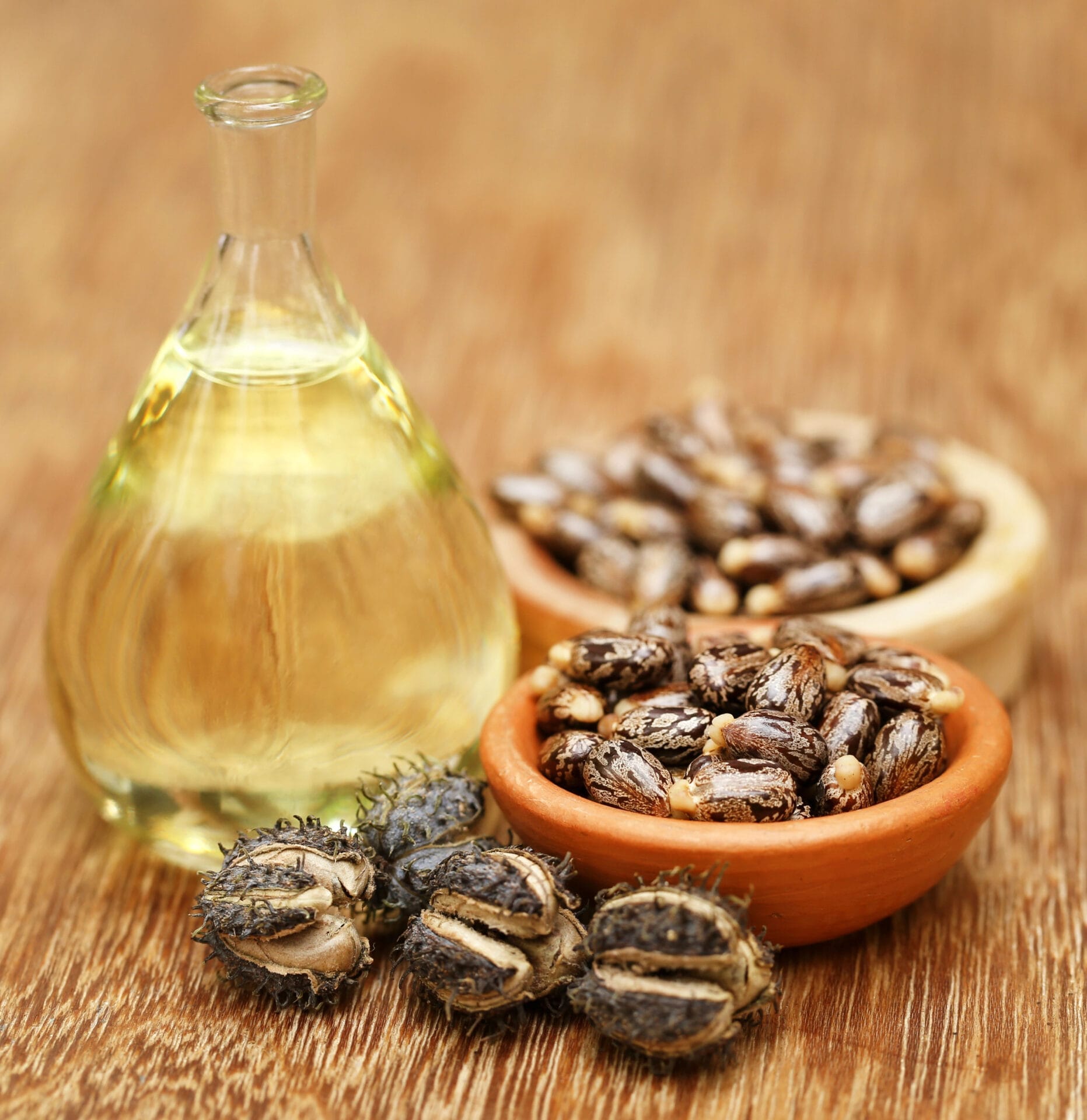
Table of Contents
Phthalates Found in Popular Castor Oil Products
Mamavation’s EPA-certified laboratory found phthalates in popular castor oil products. These chemicals are linked to serious health effects, which we will discuss later. Because phthalates are so problematic to normal hormone action, Mamavation has commissioned our own scientific studies on phthalates in personal care products to make recommendations for the safest castor oils for personal care. Continue reading Mamavation’s article on these products to find which brands have the lowest amounts of phthalates, according to our laboratory.
For this consumer study, Mamavation sent 10 popular castor oils from 10 brands to an EPA-certified laboratory looking for phthalates. Because Mamavation only tested one product per product category, we cannot claim to know if these issues are, in fact, industry-wide or brand-wide. However, based on our “spot-check” of the industry, this is what we found:
- 100% of castor oil products analyzed by our laboratory contained traces of phthalates. That’s 10 out of 10 products.
- Ranges of phthalates were from 95 ppb to 3,300 ppb, which is the total sum of phthalates. Based on the amounts presented, we created 3 categories to communicate levels of phthalates found: (1) Castor oils with the most contamination, (2) Castor Oils with intermediate contamination; & (3) Castor oils with the least contamination. These categories are not based on health impacts. They are based on what we have found and where the middle ground lies in each category.
- 10% of castor oil products had over 500 ppb total sum phthalates. That’s 1 out of 10 essential oil products over 500 ppb. We dubbed this the “Not Our Favorite Castor Oils with Highest Contamination” realm, which would have the highest amount of phthalates.
- 60% of essential oil products had between 200 ppb and 500 ppb total sum phthalates. That’s 6 of 10 castor oil products between 200 ppb and 500 ppb. We dubbed this the “Better Castor Oils with Intermediate Contamination” realm.
- 30% of Castor Oil products had below 200 ppb phthalates. That’s 3 out of 10 essential oil products below 200 ppb. We dubbed this the “Best Castor Oils with the Lowest Contamination” realm.
If you are using essential oils for personal care, this investigation will be very important to follow to reduce your family’s exposure to phthalates. However, as you can see, all castor oil manufacturers whose products Mamavation studied still have work to do to remove phthalates.
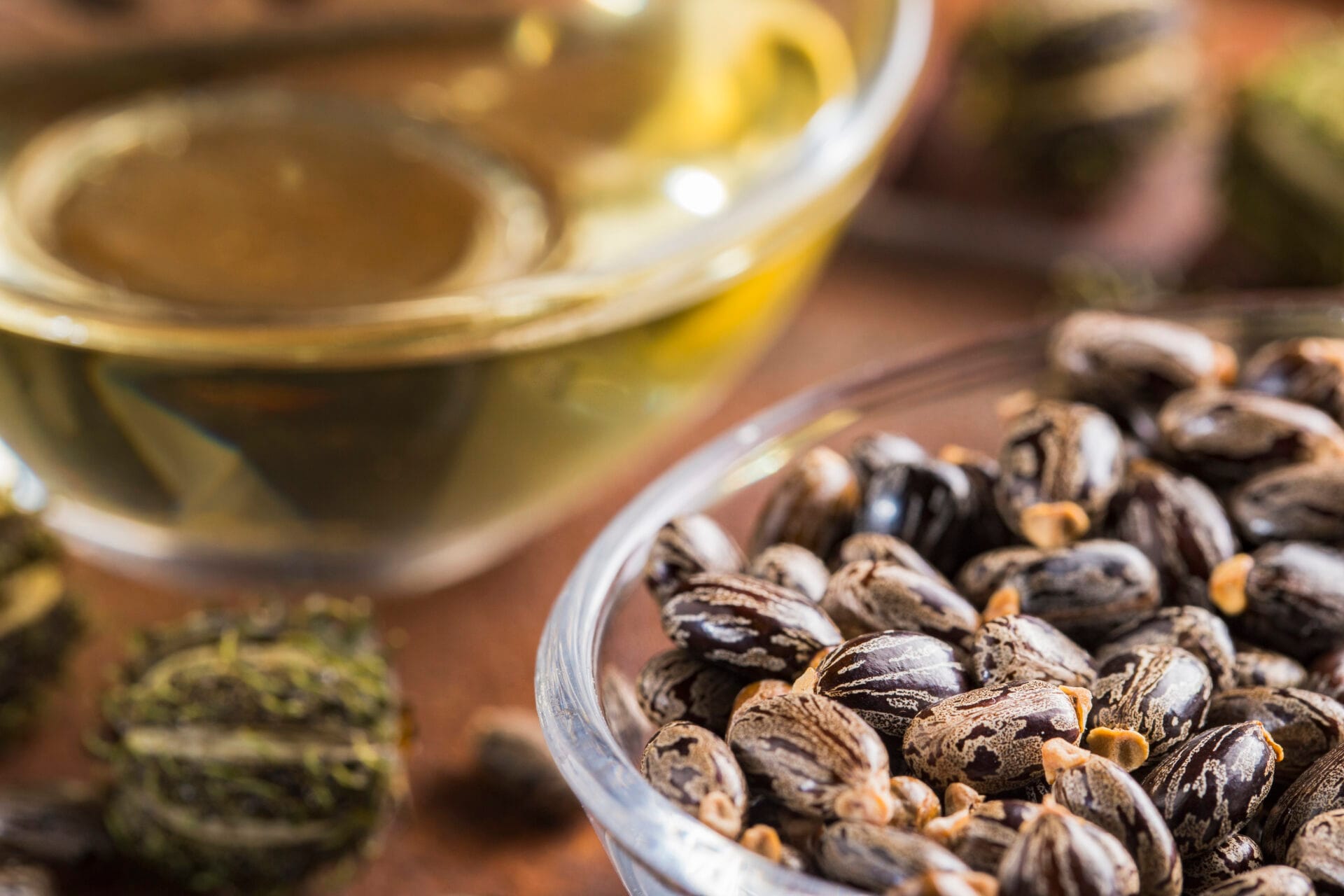
Types of Phthalates Found in Our Castor Oil Study
Our laboratory found 12 different types of phthalates in the castor oils we sent to them. Here’s a brief breakdown of each type of phthalate our lab found.
- Diethyl phthalate (DEP): Used as a solvent and fixative in fragrances, this chemical is a phthalate ester. It is dense and sinks in water. DEP can be found inside toothbrushes, automobile parts, tools, toys, food packaging, cosmetics,
insecticides, & aspirin. Studies found that low molecular phthalates, such as DEP, can acutely irritate the skin, conjunctiva, and mucous membrane of the oral and nasal cavities - Di-n-pentyl phthalate (DPP): According to the EPA, DPP is no longer in use in commerce. Oddly, our EPA-certified laboratory is somehow finding it in essential oils. DPP was primarily used to soften polyvinyl chloride. But later could be found in a number of products, including glues, building materials, personal care products, detergents and surfactants, packaging, children’s toys, paints, pharmaceuticals, food products, and textiles.
- Diisobutyl phthalate (DiBP): Exposure to DiBP induced changes in animal body weight, liver weight, and reproduction and development (testicular weight, spermatogenesis, fetal body weight, anogenital distance, testicular testosterone production, sertoli cell vacuolization, testicular development, and external malformations in reproductive tissue). The Consumer Products Safety Commission says “products that contain DiBP may be considered “hazardous.”
- Dimethyl Phthalate (DMP): This phthalate is a short-branched low molecular weight phthalate. It’s found commonly in safety glass, lacquer coatings, insect repellents, cosmetics, ink, soap, and household cleaning products. This phthalate has been linked to weight gain among other health problems via animal studies such as endocrine disruption, reproductive issues, liver & kidney toxicity, & cancer concerns.
- Dibutyl phthalate (DBP): This type of phthalate is commonly used as a plasticizer and as an additive to adhesives or printing inks. It usually is a colorless oil, but can have a yellow color. Use of this substance in cosmetics, such as in nail polishes, is banned in the European Union. DBP is one of the six phthalic acid esters found on the Priority Pollutant List regulated by the Environmental Protection Agency (EPA). Animal studies have observed that DBP is toxic to fetal development. This phthalate is associated with additional health concerns like reproductive toxicity, prenatal, perinatal, & post-natal toxicity, and genotoxicity.
- Di-n-octyl phthalate (DNOP): This type of phthalate is a colorless, odorless, oily liquid that doesn’t evaporate easily and is used to keep plastics soft or more flexible. It is used for medical tubing and blood storage bags, wire and cables, carpetback coating, floor tile, adhesives, cosmetics, and pesticides. Animal studies have demonstrated increased fetal malformations and reduced body weights of offspring. DNOP comprises about 20% of commercial C6-10 phthalate mixtures used in flooring and carpet tiles, tarps, pool liners, and garden hoses. DNOP is approved by the Food & Drug Administration (FDA) as an indirect food additive which is typically used in manufacturing as seam cements, bottle cap liners, and conveyor belts. DNOP are classified by the United States Environmental Protection Agency (USEPA) as priority environmental pollutants.
- Benzyl butyl phthalate (BzBP): This type of phthalate is used as a plasticizer in the production of polyvinyl chloride and other plastics. You’ll find this in sealing, coating, painting, adhesive products, and formulations. Phthalates are linked to reduced fetal testosterone indicating anti-androgenic effects in animal studies.
- Dicyclohexyl phthalate (DCHP): DCHP is a Phthalate ester (PAEs) and a type of persistent organic pollutant (POP). It’s a phlegmatizer (i.e. lowers the excitement of molecules and keeps them from exploding) and dispersion agent, used in adhesives, as a sealant or in textile printing, as a co-plasticizer in PVC, rubber, and other plastics. This phthalate is classified as toxic for reproduction and has endocrine-disrupting properties and has also been linked to high cholesterol, & cardiovascular disease. EPA designated DCHP as a High-Priority Substance in December 2019 and has been reviewing its toxicity ever since.
- Diisononyl phthalate (DINP): This type of phthalate is used as a plasticizer. The European Union has set restrictions on this chemical in food contact materials because of the determination that it’s problematic to human health. DINP is also listed on the California Prop. 65 list of carcinogens and reproductive toxicants.
- Diisodecyl phthalate (DIDP): Found commonly in PVC plastics, artificial leather, toys, carpet backing, covering on wires and cables, and pool liners. This chemical is also on California’s Prop. 65 list of carcinogens and reproductive toxicants. It’s associated with health concerns including liver & kidney toxicity, developmental issues, endocrine disruption, reproductive issues, asthma & allergies, & thyroid problems.
- Di-2-ethylhexyl Phthalate (DEHP): DEHP is a highly toxic endocrine disruptor. It was also the most common phthalate found by our lab and is found commonly in building products (wallpaper, wire, and cable insulation), clothing (footwear, raincoats), car products, food packaging, medical devices, and children’s products (toys, grip bumpers). This chemical is also on California’s Prop. 65 list of carcinogens and reproductive toxicants. In addition, it’s been linked to endocrine disruption, reproductive issues, developmental issues, liver & kidney toxicity, asthma & allergies, & thyroid problems.
- Bis(2-propylheptyl) Phthalate (DPHP): This type of phthalate is a substitute for other high molecular weight phthalates used primarily for high-temperature applications such as cable wires, roofing membranes, and food containers. It is used to soften plastics and is a general-use plasticizer under investigation as an endocrine disruptor. This phthalate is associated with additional health concerns like reproductive toxicity, prenatal, perinatal, & post-natal toxicity, and genotoxicity.
- Didecyl phthalate (DDP): This type of phthalate is used as a plasticizer for vinyl resins and also shown to be compatible with polystyrene and cellulosics. This type of phthalate doesn’t have lots of available health data, so we will state that phthalates are generally linked to endocrine disruption, reproductive issues, developmental issues, liver & kidney toxicity, asthma & allergies, and thyroid problems.
Phthalates Have Specific Problematic Health Effects
Phthalates are linked to many health effects from several studies on both animals and humans. This is very problematic because phthalates are linked with disruption of the endocrine system, which regulates the body’s hormones, even in trace amounts in low concentrations. Epidemiological studies have revealed that exposure to phthalates adversely affects the level of hormones within the body, which can impact many important health functions. Here are some health effects phthalate exposure is linked to.
- Weight gain & obesity
- Shorter height
- Precocious puberty
- Asthma
- Allergies
- Attention Deficit Hyperactivity Disorder (ADHD)
- Lower IQ
- Social impairment
- Type II diabetes and insulin resistance
- Poor cardiovascular health
- Thyroid function
- Increased risk of thyroid cancer
- Females: pregnancy loss and preterm birth, low birth weight, earlier menopause
- Males: genital development, semen quality, reduced “masculine” play, Inhibits testosterone production, Shortened anogenital distance, or shortened “taint” , Shortened length of penis
How are Phthalates Regulated in the Food Supply & Children’s Products?
Because phthalates are so problematic to human health, there are varying restrictions on products and food at the federal level. There is, however, no consistency among federal agencies to protect the public. For instance, the U.S. Consumer Product Safety Improvement Act (CPSIA) restricts certain phthalates within children’s toys and childcare products. They prohibit the import and sale of those products that contain more than 0.1% of the following phthalates:
- di-(2-ethylhexyl) phthalate (DEHP)
- dibutyl phthalate (DBP)
- benzyl butyl phthalate (BBP)
- diisononyl phthalate (DINP)
- diisobutyl phthalate (DIBP)
- di-n-pentyl phthalate (DPENP)
- di-n-hexyl phthalate (DHEXP)
- dicyclohexyl phthalate (DCHP)
Even though the U.S. Consumer Product Safety Commission restricted 8 ortho-phthalates in products intended for use by children, some of the same chemicals, approved as indirect additives by the FDA, are still found in the food supply even when those foods are marketed to children. Furthermore, the FDA denied a citizen petition in 2022 demanding that these phthalate chemicals be removed from the food supply because they impact children’s hormones.
California also has some restrictions under the Prop. 65 list of Carcinogens and Reproductive Toxicants, requiring products sold over the limits to be accompanied by a warning. Any consumer living in California who tests and finds products with specific phthalate amounts outside the limits may bring a Prop. 65 lawsuit six months after serving the company with a public notification letter. However, be advised these limits are not enforceable. California’s “right to know” law is only about warning the consumer about the carcinogenic chemicals present. Therefore, California cannot force companies to recall products that are above these limits. Here are the phthalate-criteria:
- BBP – Maximum Allowable Dose Levels (MADL) 1,200 μg/day (oral) (Note: ug = a microgram = 1 millionth of a gram. 1 gram = 0.035 oz.)
- DBP – MADL 8.7 μg/day
- DIDP – MADL 2,200 μg/day
- DnHP – MADL 2,200 μg/day
- DEHP – No Significant Risk Level (NSRL) 310 μg/day (adult), MADL 4,200 μg/day (intravenous adult), MADL 600 (intravenous infant), MADL 410 ug/day (oral for adult), MADL 58 ug/day (oral for infant).
- DINP – NSRL 146 μg/day
It could be possible that the vast majority of phthalates are finding their way into the product during manufacturing, storage, or transportation. Under the Food & Drug Administration 21 CFR rules, FDA regulates food, drugs, cosmetics, and food contact materials within the United States. The FDA sanctioned the use of 25 plasticizers via an amendment to food additive regulations: 21 CFR Part 175 through 21 CFR Part 178. These regulations allow the use of phthalates in the food supply as “indirect food additives” that can be present. These chemicals can find their way into your food in many ways during manufacturing such as:
- Adhesives and components of coatings used in food contact materials;
- Components of paper and paperboard, such as paperboard that is in contact with aqueous and fatty foods or used as a defoaming agent on the paperboard;
- Adjuvants, production aids, and sanitizers used in manufacturing;
- Plasticizers in polymeric substances, such as phthalates in plastic PVA or PVC sheets in food contact materials OR vinyl chloride homopolymers or copolymers used in food contact materials;
- Surface lubricants used to make metallic products.
Other Categories of Products Mamavation Has Tested for Toxic Contaminants
Before we launch into the raw data from our lab, we wanted to remind you about all the other studies we have done on indications of PFAS “forever chemicals,” pesticides, & heavy metals inside the food and consumer products you may bring inside your home. Each one of these studies were done in a similar fashion as this study with brands sent independently to the certified lab and raw data of those labs at the bottom of the post.
- Soft Contact Lenses
- Green Beauty Makeup
- Lip Balm
- Condoms & Lubricants
- Dental Floss
- Toilet Paper
- Tissue Paper
- Period Underwear
- Tampons
- Sanitary Pads, Pantiliners, & Incontinence Pads
- Powdered Electrolytes
- Cinnamon
- Salt
- Butter Wrappers
- Pasta & Tomato Sauces
- Nut Butters (Peanut butter, etc.)
- Coffee
- Olive oils
- Coconut oils
- Avocado oils
- Ghees
- Ketchup
- Activewear (Yoga Pants)
- Sports Bras
- Parchment Paper
- Cupcake Liners
- Plastic-Free Straws
- Sandwich Baggies (Both plastic & more “sustainable” options)
- Fast Food Packaging
- Furniture
- Children’s Probiotics
- Kids’ Backpacks
- Baby Strollers
- Baby Bottles
Mamavation’s Investigation of Castor Oil & Phthalates
Our EPA-certified laboratory has tested for fourteen phthalate chemicals with each category. According to the FDA, this is not a complete list of all the phthalates allowed as indirect food additives in commerce. However, this list goes above and beyond what is already restricted by the European Union or the State of California and mirrors what was tested in 2023 by Defend Our Health.
- Diethyl phthalate (DEP)
- Di-n-propyl phthalate (DPP)
- Diisobutyl phthalate (DIBP)
- Dibutyl phthalate (DBP)
- Dihexyl phthalate (DnHP)
- Benzyl butyl phthalate (BBP)
- Dicyclohexyl phthalate (DCHP)
- Diisononyl phthalate (DINP)
- Di-n-octyl phthalate (DnOP)
- Diisodecyl phthalate (DIDP)
- bis(2-Ethylhexyl)phthalate (DEHP)
- Dimethyl phthalate (DMP)
- Bis(2-propylheptyl) Phthalate (DPHP)
- Didecyl phthalate (DDP)
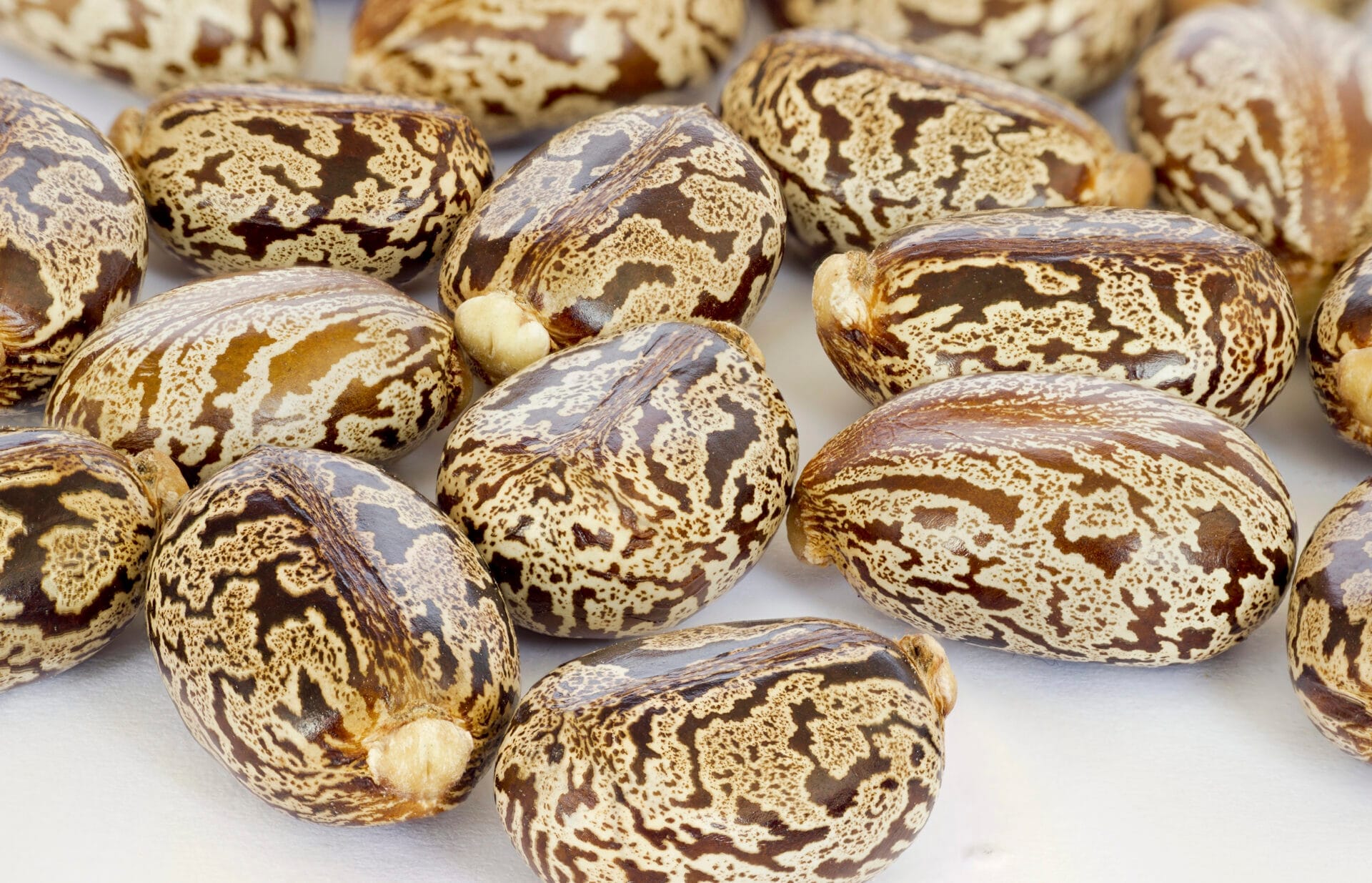
Not Our Favorite Castor Oil
This category contains castor oils sent to our EPA-certified laboratory, which found phthalate sum levels above 500 ppb.
- Handcraft Blends Organic Castor Oil — 3,300 ppb total sum phthalates
Better Castor Oil
This category contains castor oils sent to our EPA-certified laboratory, which found phthalate sum levels between 200 ppb and 500 ppb.
- Rejuve Natural 100% Pure Certified Organic Castor Oil — 293 ppb total sum phthalates
- Now Solutions Castor Oil — 283 ppb total sum phthalates
- Queen of Thrones Organic Golden Castor Oil — 270 ppb total sum phthalates
- Kate Blanc Cosmetics Organic Castor Oil — 289 ppb total sum phthalates
- GreenIVe Castor Oil — 234 ppb total sum phthalates
- Natural Riches Organic Castor Oil — 364 ppb total sum phthalates
Best Castor Oil
This category contains castor oils sent to our EPA-certified laboratory, which found phthalate sum levels below 200 ppb.
- Viva Naturals Organic Castor Oil — 95 ppb total sum phthalates
- Sky Organics Organic Castor Oil — 105 ppb total sum phthalates
- Heritage Store Organic Castor Oil — 150 ppb total sum phthalates

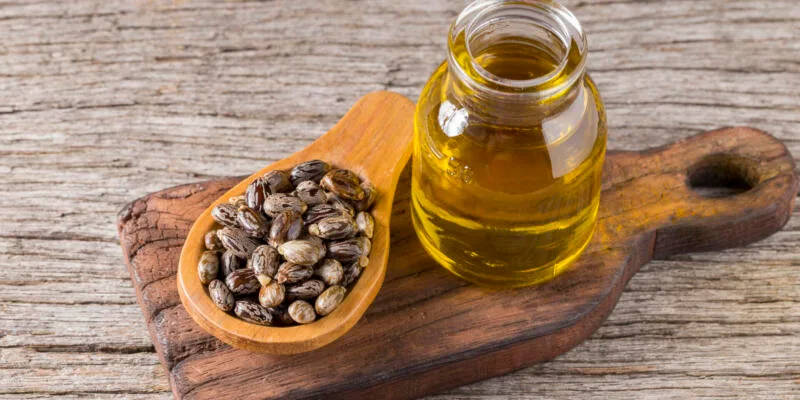
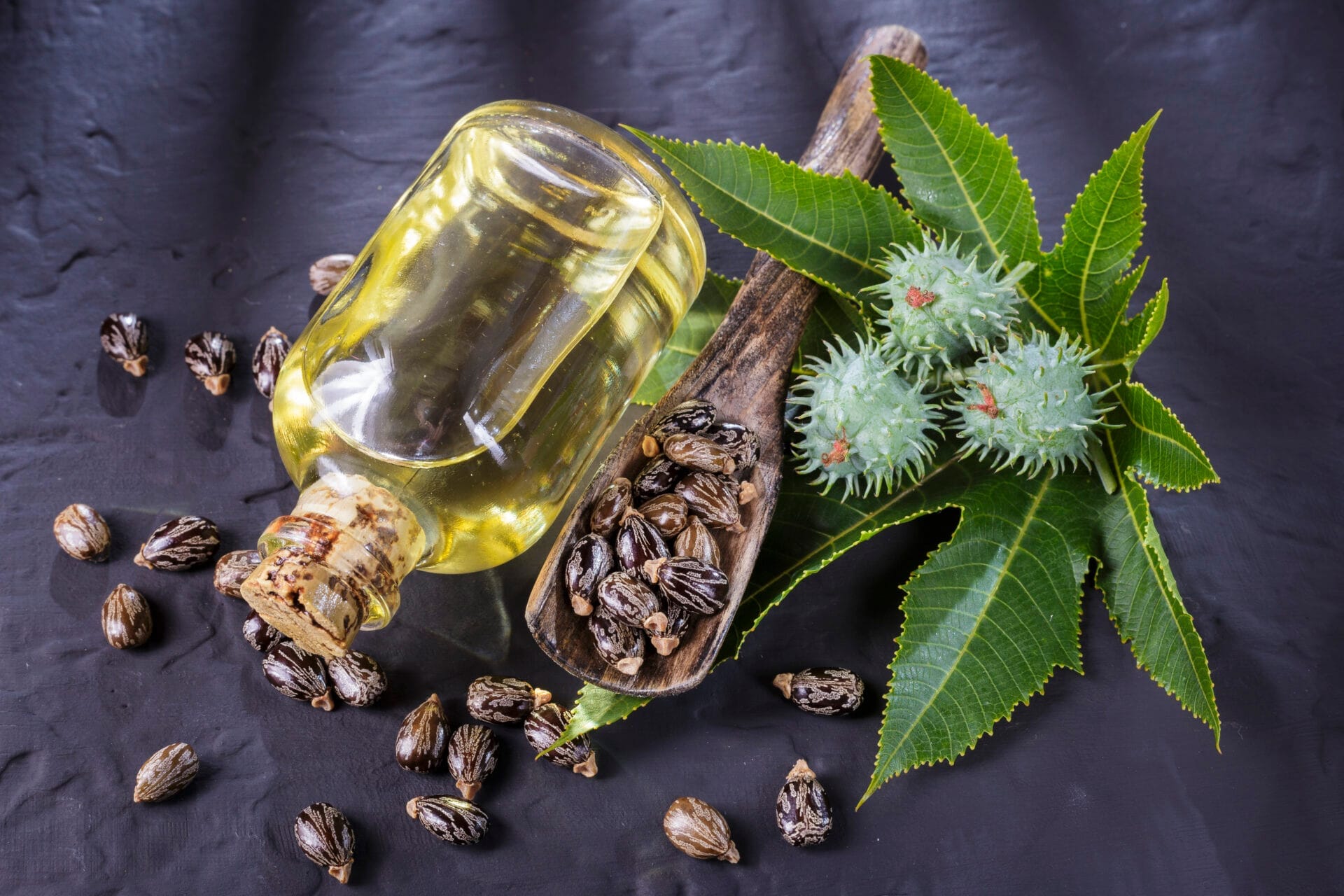
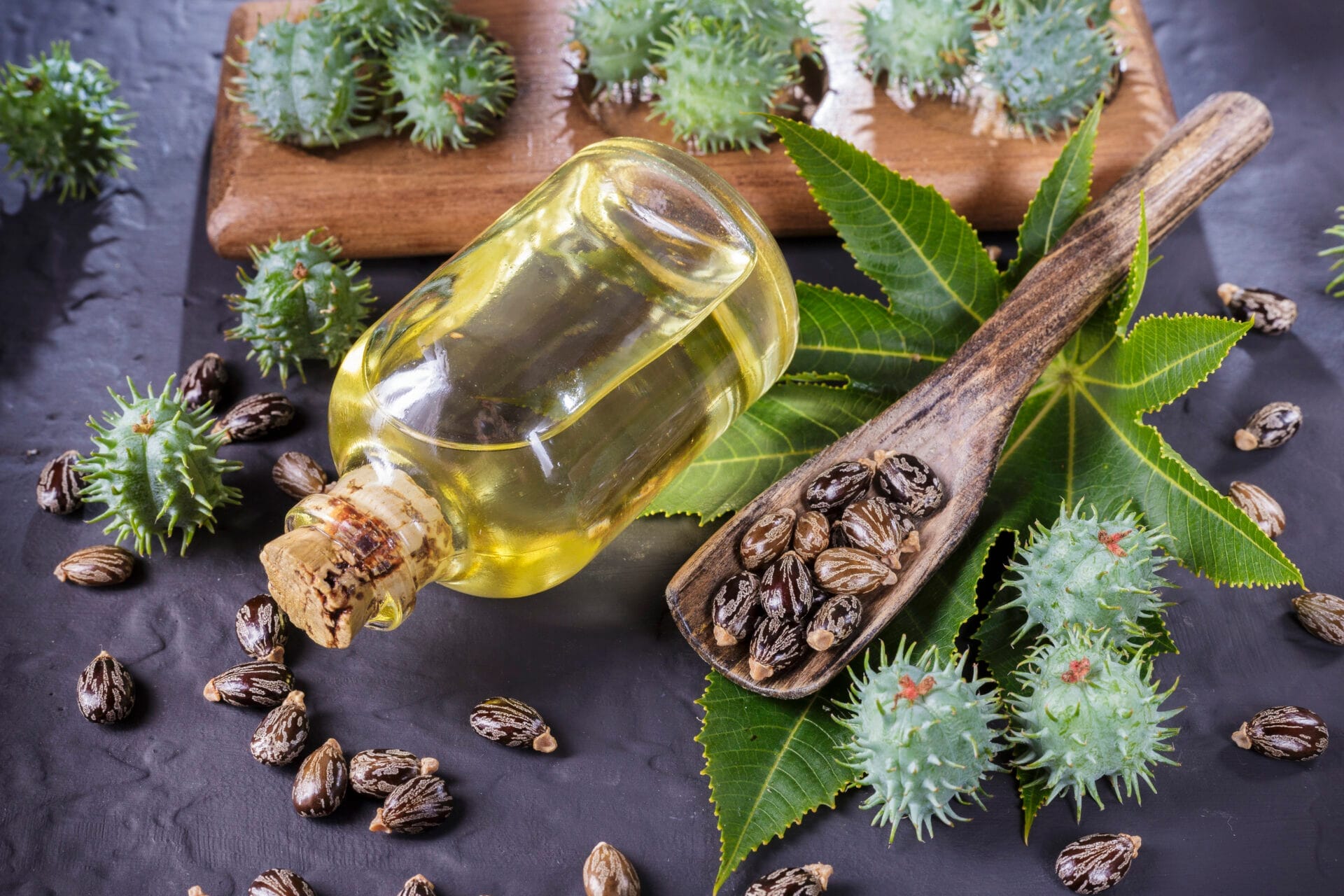
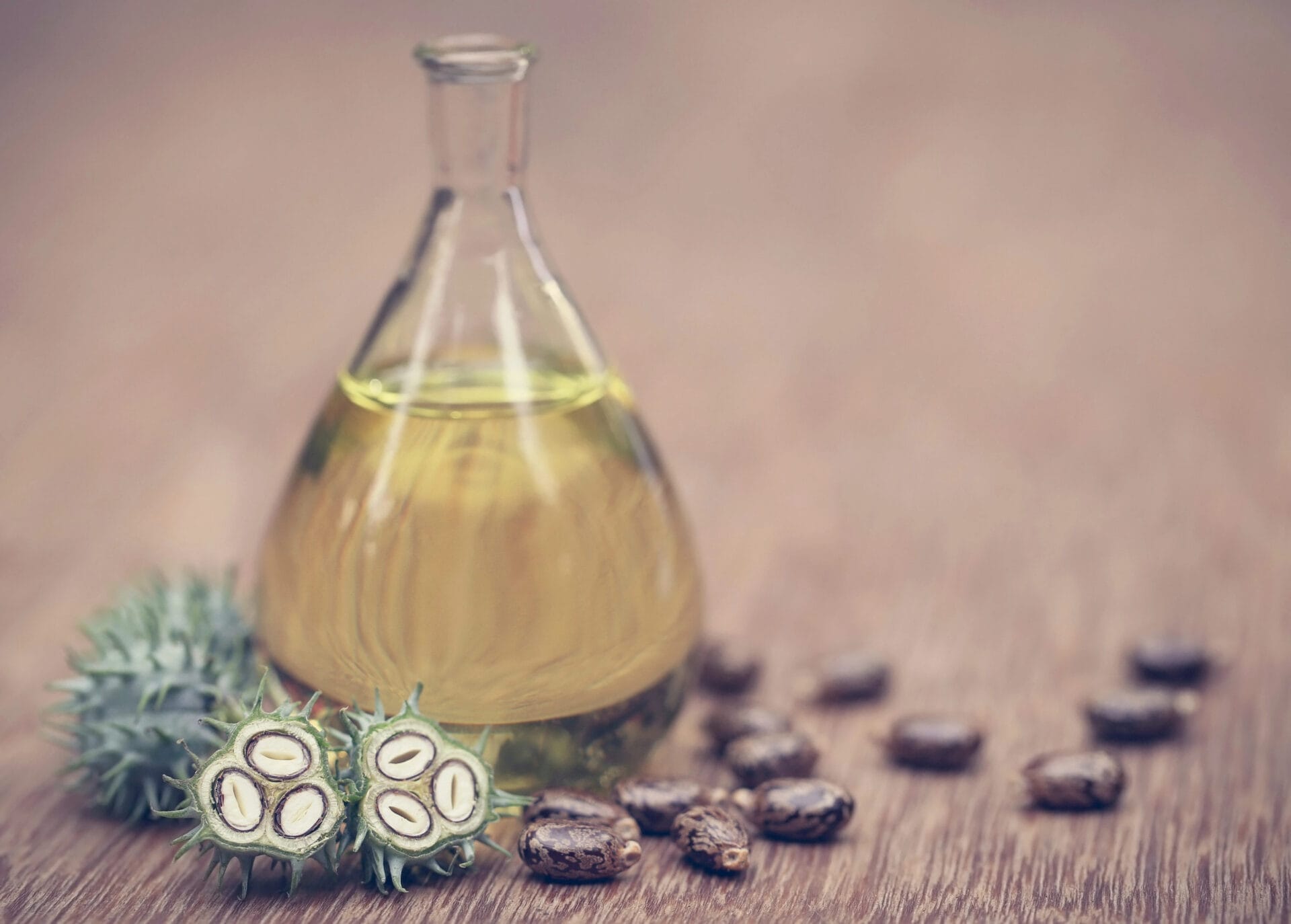
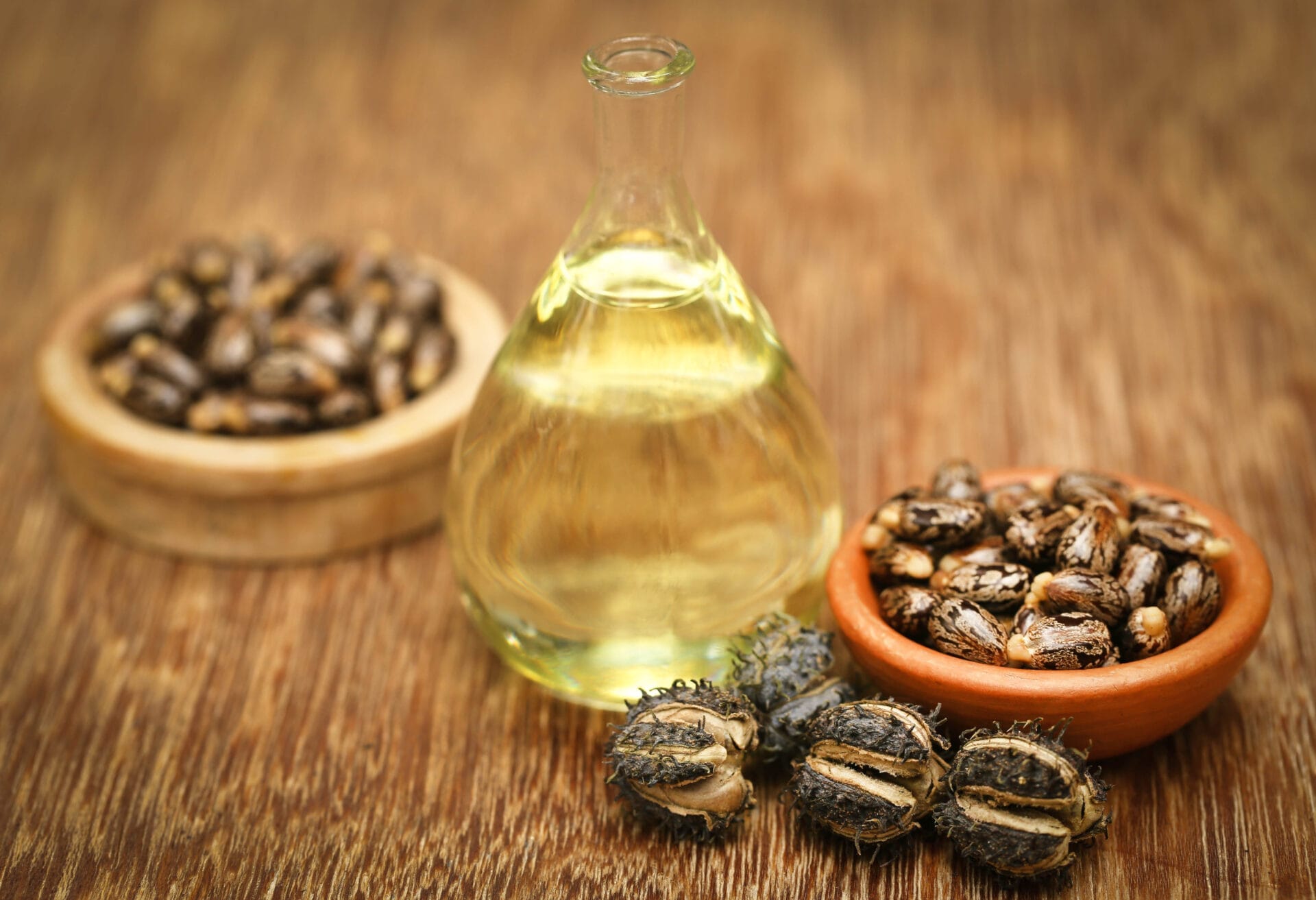
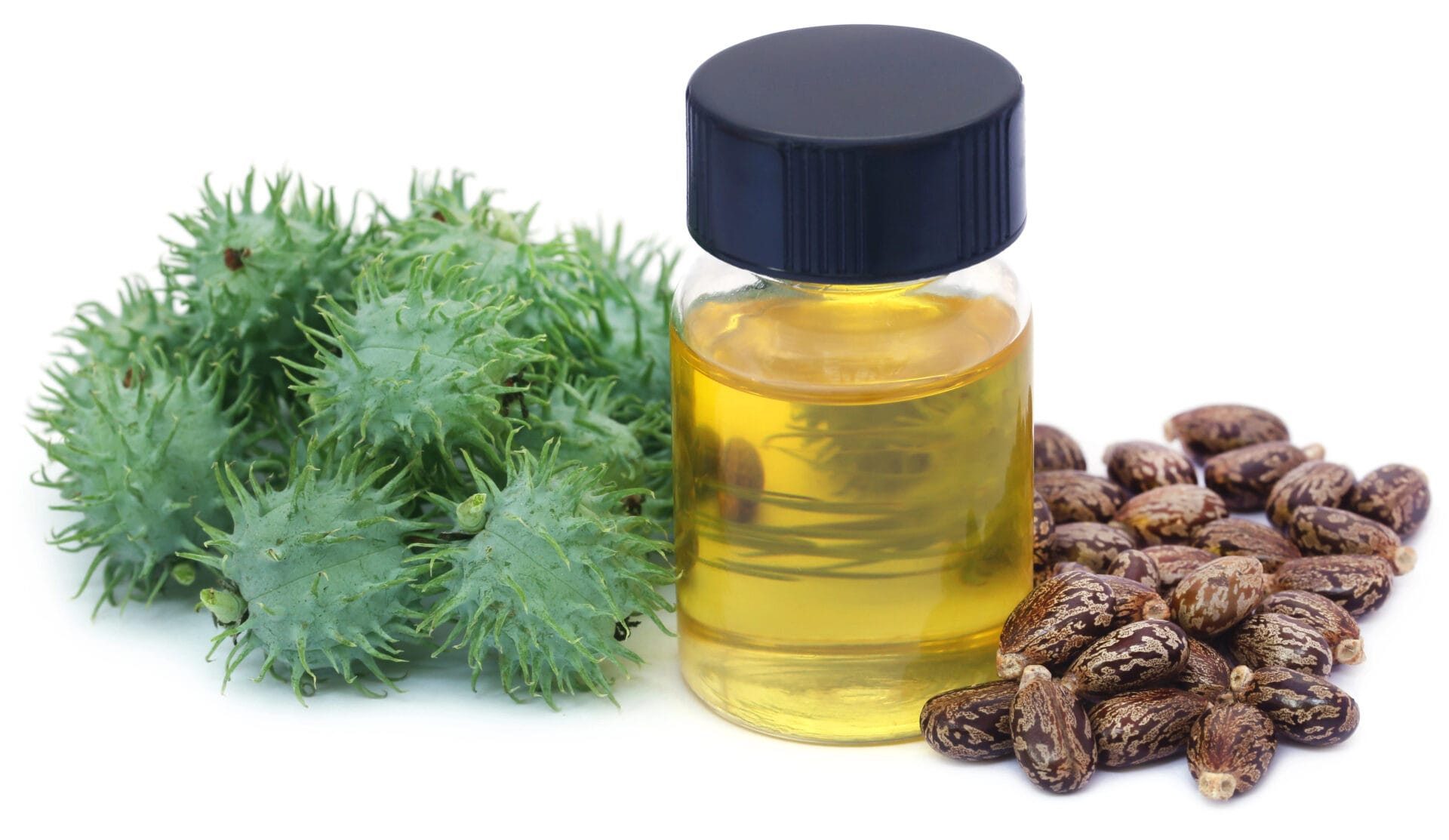

 Safest Non-Toxic Slow Cookers — Guide of Crockpots
Safest Non-Toxic Slow Cookers — Guide of Crockpots
amazing tips!
The fact that Mamavation went the extra mile to test for hormone-disrupting phthalates in popular brands is fantastic.
Thanks, Mamavation, for doing this important work and sharing the findings with us! It empowers us to make more informed choices for ourselves and our families.
How come when I click one of the company’s results, it just takes me to Amazon website. I would like to see the third-party lab test results. 293 ppb is .293 ppm. This is a very low level — but not quite “non-detectable.” It’s a trace amount, and its significance depends on the context. At 0.293 ppm, you’re likely far below toxic dose for dermal exposure.
Also, if you would provide that actual test results from the lab, we can see which phthalate(s) are contributing to the test number. These are the toxic
DEHP
DBP
BBP
DEP
DIBP
So, this is great work, however, there is missing data to support your claims
Agreed. What lab us used anc where are lab certified results? This all means nothing without actual data
Can you please test Pretty Farm Girl Organic Castor Oil? It comes in a glass bottle and is cold-pressed and hexane-free.
Hi, I too try and avoid plastic containers. I just heard barbara O’Neil say in one of her videos that it didn’t matter if CO was in a plastic bottle because it doesn’t take in other chemicals but penetrates
That is true
I want to know why some other dr says the opposite of this? Heritage on the bad list.
I just attended her live class and she actually emphasized the importance of buying organic castor oil in dark glass containers.
which one is the best ?
The problem is you’re only looking at one element of quality – phthalates are NOT the end-all-be-all indicator of a high quality product. There are other markers of microplastics and other harmful ingredients like heavy metals, or even rancid oil. Why would you just focus on one aspect of quality? This is doing your readers a disservice.
I’m so grateful for the information that you provide and it has allowed me to make safer choices. I know you concentrate on phalates, but are you also testing for high levels of pfa’s and bisphenols which can also contaminate soil? Also, I’m always on the lookout for organizations/websites that test for glyphosates too. This article caught my eye because I’ve been shopping for a plant-based bristle/ bamboo handle toothbrush. They’re using castor oil to make a polyamide (nylon 11) which may not use pfas in the polymerization process but is processed to the point where it’s no longer even biodegradable. It didn’t even occur to me that this bioplastic might contain phalates as well.
Thank you for your info, Margaret. I was just about to check out Viva Naturals and Skye, but since they come in plastic bottles that can leach, I will skip them. I agree will your assessment. I also use Heritage Store Castor Oil in the amber bottle and will continue. Great to know that Heritage comes in 32 oz.
I use the Aura Cacia from Whole Foods. Also in a plastic bottle. I’m curious if that’s a good one.
I use the Heritage brand castor oil on your Best list, for decades. It’s only the third lowest ranking on the best list, so I checked-out the first two brands.
I was told to get it in an amber glass bottle. The first one on the list the Viva natural one, has CA Prop 65 warning, and looks to be in a. Plastic bottle. The second one says it’s in a plastic bottle.
Heritage also comes in a 32 oz bottle which is more economical, especially if you don’t want the mascara bottle & brushes anyway.
I mostly go to your Best recommendation section because why not if it’s affordable. But also avoiding Plastic, small containers and hassle & expense of frequent ordering.
Thank you for your info, Margaret. I was just about to check out Viva Naturals and Skye, but since they come in plastic bottles that can leach, I will skip them. I agree will your assessment. I also use Heritage Store Castor Oil in the amber bottle and will continue. Great to know that Heritage comes in 32 oz.
Ii bought the Viva Naturals given it’s best results but it came in plastic bottles so returning. This is a HUGE problem given CO is a super strong carrier oil & will suck the plastic chemicals then drive them into your tissue. We’ve got to consider this in addition to the phthalate levels. I’ll be buying Heritage from now on as they are in glass & meet all the other standards, organic, cold pressed & hexane free.
Hi, I too try and avoid plastic containers. I just heard barbara O’Neil say in one of her videos that it didn’t matter if CO was in a plastic bottle because it doesn’t take in other chemicals but penetrates
Just because she says it doesn’t mean it’s true. It doesn’t make any sense. All oils absorb toxins in plastic because they’re fatty.
Castor oil is a pusher not a puller
Hello,
I’ve been using The Goodbye Company Organic Castor Oil with amazing results! Do you know if you will be testing that brand in the future?
We will be checking the comments before we start retesting new brands. Thank you for that suggestion.
I’m also curious about this one 🙂
Also curious about MD Klean CO
What about Blissful Organix castor Oil?
What about Maju Black see oil?
Looks like it doesn’t matter that castor oil is in glass , plastic bottles have less phthalate. Interesting.
We listed in the investigation several ways phthalates could get into the product during manufacturing. It doesn’t seem to us that the plastic bottles used have any phthalates present, which is pretty typical of the type of packaging we’ve seen lately. We can’t say those products don’t have other types of microplastics because they are packaged in plastic, but for the specific phthalates we tested, that looked better than most.
I wish Lana had explained why plastic bottle have less phthalate. Perhaps I missed something above. I’ll go back and reread this. I also see that one the best castor oils is Sky Organics which is also in plastic and the reason I switched to Heritage. I am trying to get plastic out of my life. But it is everywhere, and impossible to achieve. In my humble opinion, I believe that plastic is the top most important thing that governments should be looking to eliminate this from the earth.